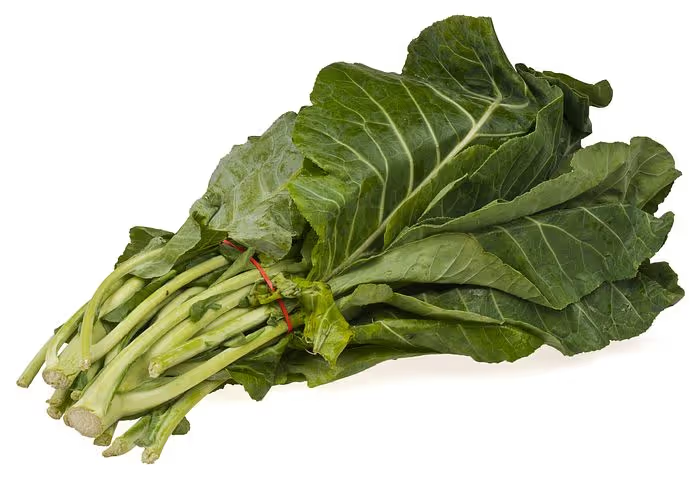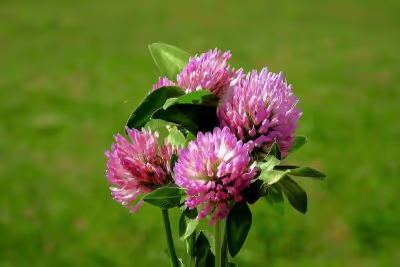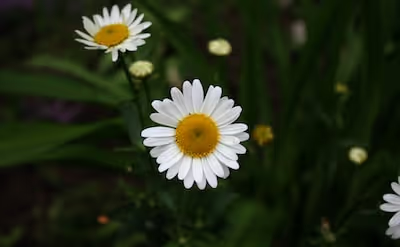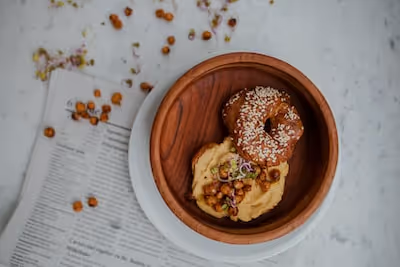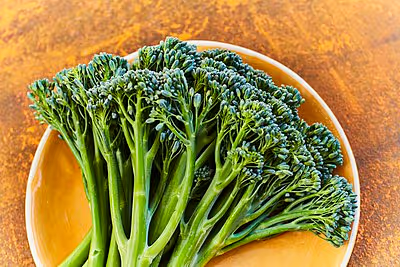Growing Lovage: Cultivating the Versatile Garden Herb
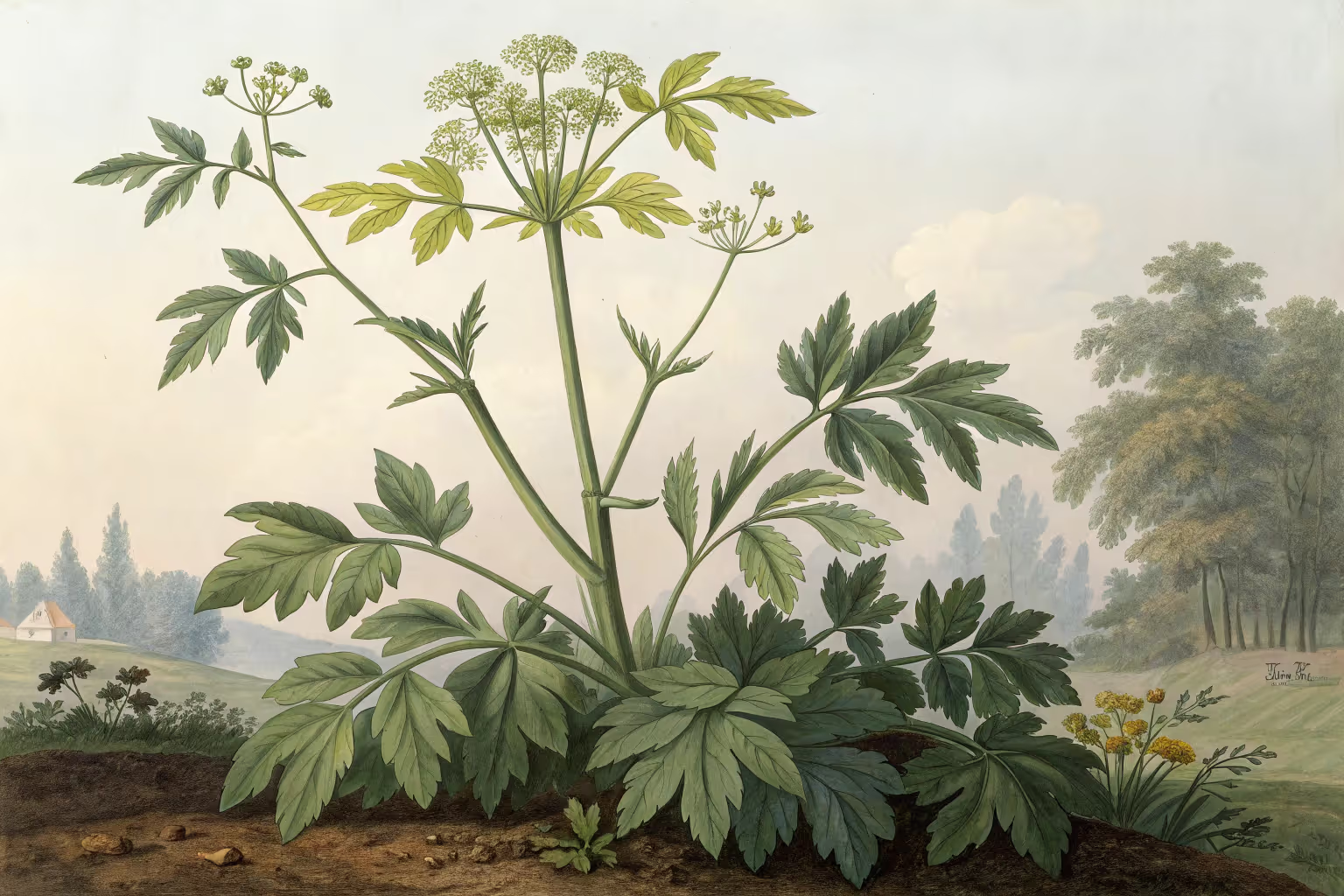
Growing Lovage
Growing Lovage requires little fuss and gives maximum flavor—one sturdy perennial herb keeps coming back year after year. Start seeds indoors in early spring, transplant young plants after frost, then provide rich soil, regular watering, and full sun to partial shade. Trim often and use the celery-like shoots to punch-up soups, salads, and cocktails; once you taste freshly snipped lovage, you'll wonder why it never graced your garden before.
Cheatsheet: Master Lovage Cultivation in Any Garden
🌱 Soil & Location
Rich, moist, well-draining soil (pH 6.5–7.0)
Full sun or partial shade
🕒 Sowing & Timing
- Start indoors 6–8 weeks before last frost
- Plant seeds 1/4 in (0.6 cm) deep
- Transplant after soil reaches 55°F (13°C)
- Space plants 24 in (60 cm) apart
💧 Watering & Feeding
- Keep soil consistently moist
- Mulch retains moisture
- Apply compost or balanced fertilizer monthly
✂️ Maintenance & Harvest
- Harvest leaves once 8 in (20 cm) tall
- Cut flower stalks for more leaf growth
- Harvest stems & seeds late summer
- Plant returns yearly for 5+ years
Step 1: Prepare bed, loosen soil, and mix in organic matter.
Step 2: Sow seeds 1/4 in (0.6 cm) deep; keep moist until germination (14–21 days).
Step 3: Transplant outdoors after last frost; keep 24 in (60 cm) spacing; mulch and water well.
Step 4: Fertilize monthly; remove flowers for more leaves; harvest as needed.
🛠️ Tools and Products You'll Need
- Garden trowel
- Seed tray or pots
- Watering can
- Organic compost
- Mulch
- Lovage seeds
🍲 Uses, Nutrition & Self-Sufficiency
- Leaves, stems, seeds, roots all edible
- Rich in vitamin C, A, B-complex, potassium
- Use in soups, stews, salads, stocks
- Attracts pollinators; repels aphids
📊 Quick Facts
- 95% germination rate in fresh seeds
- Plant reaches 6 ft (1.8 m)
- One plant supplies a household
Growing Lovage: Cultivating the Versatile Garden Herb
Growing Lovage gives you the flavor of celery turned up to eleven, with a loftier plant that behaves like a perennial fountain. I grow it where I can brush past and smell that clean, savory snap after rain.
Why lovage earns a permanent bed
Levisticum officinale is a long-lived perennial in the carrot family, and one plant feeds a household. Mine tops 6 to 7 feet tall (1.8 to 2.1 m) by midsummer and shrugs at frost in USDA Zones 3 to 9.
The leaves, stems, seeds, and roots all pull their weight in the kitchen, so the plant earns its square footage. It also draws syrphid flies and parasitic wasps, which keep aphids honest.
Site and soil that lovage actually likes
Give full sun in cool climates or light afternoon shade where summers hit hard, and choose a spot with room overhead. Soil wants to be deep, well drained, and loaded with organic matter with a target pH of 6.5 to 7.0.
I fork in 2 to 3 inches (5 to 7.5 cm) of finished compost every spring and a light top-up in midsummer. The plant grows bigger on a steady, even diet rather than big dumps of nitrogen.
Watering for lush, clean flavor
Keep moisture consistent, about 1 inch (25 mm) of water per week, and a bit more in sandy soils. Dry spells turn leaves harsh, while soggy crowns invite rot.
Germination sweet spot: 60 to 70 F (15 to 21 C), 10 to 20 days with fresh seed and steady moisture.
Seeds, starts, and how to plant without regrets
Seed viability drops fast, so buy fresh each spring or save your own the same season. For transplants, I use soil blocks or deep cells because lovage resents cramped roots.
Sow shallow at 0.25 inch (6 mm), then thin or transplant to 24 to 36 inches apart (60 to 90 cm). If germination drags, a 2 to 4 week chill in the fridge improves vigor.
Transplanting tricks I learned the hard way
Set starts out after the last frost when nights hold at 50 F (10 C). Water deeply, then mulch with 2 inches (5 cm) of shredded leaves to lock in moisture and keep soil cool.
Avoid disturbing the taproot during planting. I have lost more lovage to rough handling than to winter.
Feeding schedule that works
In spring, side-dress with 0.5 inch (1.25 cm) of compost and a handful of a balanced organic fertilizer at roughly 5-5-5 per plant. If leaves pale in July, give a light fish or seaweed feed at label rates.
Skip heavy manure late in season, or you will push soft growth that winter chews up. The sturdy stuff comes from modest, steady nutrition.
Sun, heat, and wind
Lovage thrives in full sun where summers peak around 80 F (27 C). In hot interiors that run 95 F (35 C), I give it an hour or two of shade after lunch and a thicker mulch.
Stake in windy sites, or let a tomato spiral keep stems from flopping. The hollow stalks sail like kites in August gusts.
Harvest schedule for leaves, stems, seeds, and roots
Start harvesting leaves when plants reach 8 inches (20 cm), and take the outer leaf stalks so the crown keeps pushing growth. For stems, pick young, crisp ones for broths and lovage salt.
Let a few umbels set seed, then cut heads brown and dry in paper bags for a celery-seed stand-in. Roots lift in late fall of year two for a parsley-parsnip vibe in soups.
Flavor management: flowers, bitterness, and cutting back
Snip out flower stalks early if you want long leaf production, since flowering shifts flavor and energy to seed. I cut the plant to 8 inches (20 cm) once in midsummer, then water and feed lightly for a tender flush.
Overwintering and division
After frost blackens the top growth, cut to ground and mulch crowns with 2 to 4 inches (5 to 10 cm) of straw or leaves. In zones with freeze-thaw cycles, that mulch prevents heaving.
Divide every 3 to 4 years in early spring with a spade, keeping big chunks of crown and taproot intact. A divided clump rebounds fast if watered well.
Pests, diseases, and clean culture
Slugs chew new shoots, aphids stack on tender tips, and celery leaf miner can scribble through leaves. I deploy beer traps for slugs, a hard spray for aphids, and remove mined leaves promptly.
Good airflow prevents leaf spots and downy mildew. Space generously and water at soil level in the morning.
Growing lovage in containers
Use a deep pot, at least 18 inches wide and 18 inches deep (45 by 45 cm), with a soil-based mix to anchor the taproot. Water more often, since containers dry fast in July.
Feed lightly every 4 to 6 weeks during active growth. I rotate the pot a quarter turn weekly for straight stems.
Design and companions that earn their keep
Plant lovage at the back of herb borders where its height adds a green curtain by July. I pair it with chives, calendula, and dill to pull in lacewings and hoverflies.
Keep it 3 feet (0.9 m) from carrots and celeriac to blunt shared pest pressure. The scent helps, spacing helps more.
Varieties, buying tips, and seed quality
Most seed is the species Levisticum officinale with minor regional strains sold as lovage or maggi herb. Choose vendors that list current-year lot and germination test above 70 percent.
Freshness wins with this crop. If a packet looks old, I pass and order from reliable herb houses.
My quick-start playbook for Growing Lovage
- Pick a sunny bed with deep, compost-rich soil and room for a 6 foot (1.8 m) plant.
- Sow fresh seed at 60 to 70 F (15 to 21 C), thin to 24 to 36 inches (60 to 90 cm).
- Mulch early, water weekly at 1 inch (25 mm), and feed lightly in spring.
- Deadhead flower stalks for leaf production, or let a few heads ripen for seed.
- Cut back once midseason for tender regrowth and stronger flavor.
- Divide every few years to renew vigor and share plants.
Common mistakes and the fix
- Using old seed: buy fresh lots or stratify 2 to 4 weeks to boost germination.
- Shallow soil: loosen 12 to 18 inches deep (30 to 45 cm) so the taproot can anchor.
- Heavy nitrogen: leaves get coarse, so feed modestly and add compost instead.
- Overwatering crowns: mulch, but keep mulch off the crown to prevent rot.
- Letting all umbels set seed: reserve energy by removing most flower stalks early.
Tools and supplies I reach for
- Soil thermometer for that 60 to 70 F (15 to 21 C) germination window.
- Deep cell trays or soil blocks to protect the taproot during transplant.
- Balanced organic fertilizer, compost, and leaf mulch for steady growth.
- Soft ties or a single spiral stake to handle wind without bruising stems.
- Paper bags for seed drying and clean storage.
Flavor twins and alternatives if space is tight
- Leaf celery: shorter, similar flavor but annual, good for small beds.
- Parsley: milder and more forgiving, handy as a cut-and-come-again herb.
- Mitsuba (Cryptotaenia japonica): shade tolerant, delicate celery-anise taste.
- Celery leaf as bolt greens: a quick stopgap while lovage matures.
Kitchen notes from repeated harvests
Leaves vanish into broths, braises, and potato anything, and the seeds season pickles like classic celery seed. I candy the young stems like angelica for a strange, wonderful treat with bitter chocolate.
A little goes far, so plant once, then learn restraint. The flavor can bulldoze a dish if you forget that rule.
Safety and sensibilities
Like other Apiaceae, lovage contains furanocoumarins that can increase sun sensitivity during heavy handling. Wear gloves if you react to parsnip or celery sap, and wash up after harvests on bright days.
Large medicinal doses are outside culinary use and warrant professional guidance. Normal kitchen use sits well for most gardeners.
Fast facts that guide decisions
- Hardiness: USDA 3 to 9, crown survives to roughly minus 20 F (minus 29 C) with mulch.
- Height and spread: 5 to 7 feet tall by 2 to 3 feet wide (1.5 to 2.1 m by 0.6 to 0.9 m).
- Time to first harvest: 70 to 90 days from spring sowing for leaves.
- Self-seeding: moderate, remove seed heads to prevent wanderers.
Cost and sourcing pointers
Budget for fresh seed annually if starting new plants, since older packets disappoint. Many herb nurseries sell strong second-year crowns, which jumpstart harvests and are worth the higher price if you want results fast.
For bulk seed spice, grow two plants and let one ripen fully. I get a pint jar of seed from a single well-grown clump.
Notes from the field
In a cold Zone 4 plot, my lovage shrugged off minus 25 F (minus 32 C) with a 4 inch (10 cm) leaf mulch. In a hot Zone 8 courtyard, afternoon shade and drip irrigation kept flavor clean through August.
The plant is celery that moved out of the city, got tall, and learned to fend for itself. Treat it with steady water and space, and it pays you back every week.
References and further reading
- Royal Horticultural Society, Levisticum officinale profile, cultivation and hardiness guidance.
- NC State Extension, Plant Toolbox entry for lovage, notes on growth habit and landscape use.
- University of Minnesota Extension, Herbs for the home garden, cultural practices and spacing.
- Kew Science, Plants of the World Online, taxonomy and distribution for Levisticum officinale.
Frequently Asked Questions
What type of soil supports optimal growth?
Rich, well-draining soil enriched with organic compost promotes lush, healthy growth. A neutral to slightly alkaline pH (6.0-7.5) is ideal for this aromatic herb.
How much sunlight does this herb require?
For vigorous foliage, provide full sun to partial shade. Areas receiving at least 5 to 6 hours of daily sunlight encourage vibrant leaves and flavorful stems.
How frequently should watering occur?
Maintain evenly moist soil by watering regularly—approximately once or twice weekly, particularly during warm summer months. Check soil moisture frequently to avoid waterlogging or dryness.
What is the best time and method for harvesting?
Begin harvesting leaves and stems early in the growing season, typically in late spring or early summer. Use sharp garden shears and harvest regularly to promote fresh growth. Harvested leaves offer the most potent flavor when cut in the morning.
Are there common pests or diseases, and how can they be managed?
This resilient plant experiences few issues, but occasional aphid visits may occur. Address aphids promptly by spraying with water or applying an organic insecticidal soap. Practice crop rotation and adequate spacing to prevent disease.
Can containers or pots be used effectively?
Yes, containers of at least 12 inches (30 cm) in depth and width accommodate vigorous root growth. Select pots with drainage holes and fill them with nutrient-rich potting mix for best results.
Will this herb withstand cold weather conditions?
This hardy perennial tolerates cold weather and frost, surviving temperatures down to approximately -20°F (-29°C). Mulching around the plant base in winter offers additional protection in harsher climates.
Growing Lovage pays off with a tall, generous herb that tastes like bright celery. A hardy perennial that returns for years. Give it deep, fertile soil, steady water, and room. Sun helps, light shade is fine. Start from seed or a division. Keep leaves tender by snipping flower stalks. Mulch, then divide clumps every few years. Harvest young leaves for stocks and salads, save seeds for pickles. Tough plant, light on problems, but keep drainage honest.
Build a kitchen bed that works. Pair lovage with dill for feathery contrast and pollinators, tuck in chives for bite, and grow a little celery if you crave more crunch. Keep one lovage to bloom for the bees, cut the rest for the pot. Simple care, big flavor. That is the point of Growing Lovage.
The Homesteader's Take on Growing Lovage
Why Homesteaders Grow Lovage
- 🍲 Culinary value: Replace celery in soups, stews, stocks.
- 💊 Medicinal use: Remedy digestive issues, promote joint health.
- 🐝 Pollinator attractor: Invites bees and beneficial insects to the garden.
- 🌱 High yield perennial: One planting offers multiple harvests annually for 8–10 years.
Planting Tips for Self-Sufficiency
- ☀️ Optimal sun exposure: Select full sun or partial shade location.
- 🌡️ Hardiness advantage: Thrives in USDA zones 4–8; survives winters down to -30°F (-34°C).
- 🪴 Spacing guidelines: Plant seeds or transplants 24 inches (60 cm) apart for full leaf growth.
- 🚿 Moisture preference: Water frequently; prefers slightly damp, well-draining soil.
Homestead Harvesting & Preservation
- ✂️ Harvest regularly: Snip outer stalks 6–8 inches (15–20 cm) tall to encourage regrowth.
- 🌿 Dry leaves: Hang bundles upside-down in a cool, shady location for dried seasoning.
- ❄️ Freeze fresh: Chop and freeze in ice cube trays with water or oil for year-round cooking.
- 🥣 Seasoning salt: Blend dried lovage with sea salt for homemade seasoning mix.
Find out which plants will thrive in your garden!
Answer a few fun questions and get custom plant recommendations perfect for your space. Let’s grow something amazing together!

start your season
